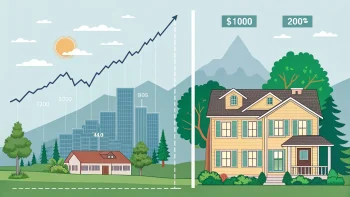If you are investing, staying informed about the latest trends and changes in the market is crucial. One such significant change is the expected reduction in the return on certain investments by 47% over the next year. This article aims to provide an in-depth understanding of this situation and guide navigating this financial landscape.
Table of Contents
ToggleThe current state of investments
Many investors have money in Money Markets, Treasury bills (T-bills), Certificates of Deposit (CDs), or high-yield savings accounts. These investments have traditionally been considered safe and reliable, providing steady returns. However, the financial landscape is changing rapidly, and these investments are no longer as profitable as they once were.
A month ago, these investments yielded a return of 5.3%. However, with the Federal Reserve (Fed) cutting interest rates, the yield on these investments is expected to drop significantly. After eight interest rate cuts by the Fed, these investments are projected to yield about 2.8% or less than 2% after taxes. This drastic return reduction is causing many investors to reconsider their investment strategies.
View this post on Instagram
A post shared by Taylor Sohns – CFP®, CIMA®, MBA – Finance (@lifegoalinvestments)
The shift to bond funds
In response to the changing financial landscape, smart money has flowed into bond funds for the past 16 weeks, setting record inflows. The reason for this shift is simple: bond math. As interest rates decrease, the yields on money markets, CDs, and high-yield savings accounts also decrease. However, as these yields decrease, bond prices increase.
This relationship between interest rates and bond prices is often likened to a seesaw. When one side goes down (interest rates), the other side goes up (bond prices). This inverse relationship is a fundamental principle of bond investing and is the driving force behind the recent surge in bond fund investments.
Historical performance of bonds
Historically, bonds have performed well in the face of interest rate cuts. Three years after the first rate cut, cash-like securities were up 15%. In contrast, the average core bond fund was up 30%. This significant return difference highlights the potential benefits of investing in bond funds.
Understanding bonds
Despite the potential benefits of bond funds, many investors remain in CDs, money markets, T-bills, or high-yield savings accounts because they do not understand bonds. However, understanding bonds is not as complex as it may seem.
Bonds are essentially loans that investors make to entities such as corporations or governments. In return for the loan, the entity agrees to pay the investor a specified amount of interest over a certain period and to return the principal amount at the end of that period. The interest rate on a bond is known as its yield, and as previously mentioned, bond prices and yields have an inverse relationship.
Conclusion
In conclusion, the expected reduction in the return on certain investments by 47% over the next year is a significant concern for investors. However, by understanding the changing financial landscape and making informed investment decisions, it is possible to navigate this situation successfully. Specifically, shifting from traditional investments like money markets, T-bills, CDs, or high-yield savings accounts to bond funds could put investors in a better position. As always, seeking professional financial advice before making any significant changes to your investment strategy is recommended.
Frequently Asked Questions
Q. What is the expected change in the return on specific investments over the next year?
The return on specific investments is expected to reduce by 47% over the next year.
Q. Why are traditional investments like money markets, T-bills, CDs, or high-yield savings accounts no longer as profitable?
Due to the Federal Reserve cutting interest rates, the yield on these investments is expected to drop significantly. These investments are projected to yield about 2.8%, or less than 2% after taxes.
Q. Why is there a shift to bond funds?
As interest rates decrease, the yields on money markets, CDs, and high-yield savings accounts also decrease. However, as these yields decrease, bond prices increase. This inverse relationship is a fundamental principle of bond investing and is the driving force behind the recent surge in bond fund investments.
Q. How have bonds performed historically in the face of interest rate cuts?
Historically, bonds have performed well in the face of interest rate cuts. Three years after the first rate cut, cash-like securities were up 15%. In contrast, the average core bond fund was up 30%.
Q. What are bonds, and how do they work?
Bonds are essentially loans that investors make to entities such as corporations or governments. In return for the loan, the entity agrees to pay the investor a specified amount of interest over a certain period and to return the principal amount at the end of that period. The interest rate on a bond is known as its yield, and bond prices and yields have an inverse relationship.
Q. What should investors do in response to the expected reduction in returns?
Shifting from traditional investments like money markets, T-bills, CDs, or high-yield savings accounts to bond funds could potentially improve investors’ positions. However, it is recommended that you seek professional financial advice before making any significant changes to your investment strategy.

















